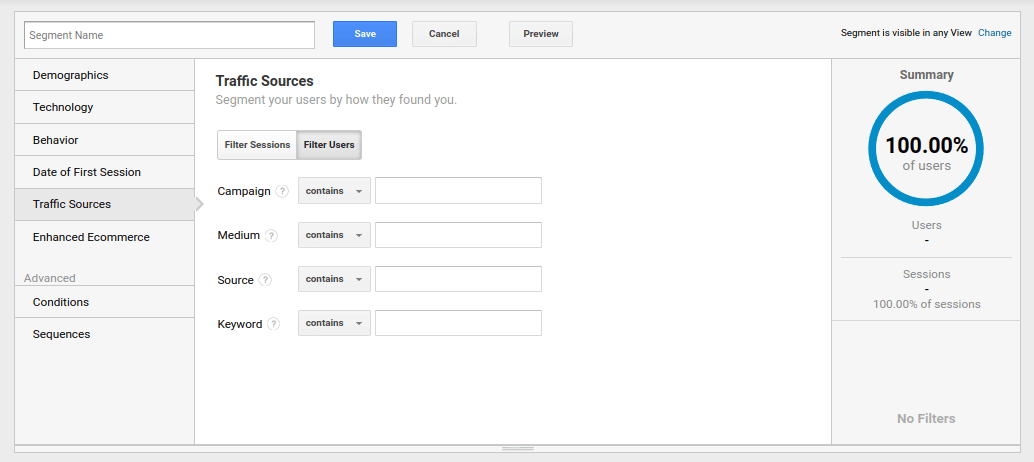Efficient Methods for Remarketing in Google Analytics
In the world of electronic advertising and marketing, the realm of remarketing in Google Analytics stands as an essential device for organizations intending to boost their on-line existence and conversion rates. Via critical audience segmentation, tailored remarketing checklists, and engaging advertisement creatives, businesses can craft individualized projects that reverberate with their target market. Nevertheless, truth success hinges on the capability to continually fine-tune and optimize these strategies based upon performance metrics and data understandings. By checking out the nuances of dynamic remarketing and leveraging advanced monitoring tools, companies can unlock the complete capacity of their remarketing efforts, leading to enhanced brand exposure and consumer engagement.
Target Market Segmentation
Using target market segmentation is a critical strategy in enhancing the efficiency of remarketing campaigns within Google Analytics. By separating your target market right into distinctive teams based upon their habits, demographics, or interests, you can customize your advertising messages to be a lot more appropriate and interesting. This method enables you to provide tailored advertisements to details segments, boosting the possibility of conversion.

Moreover, target market segmentation helps you comprehend the differing needs and choices of various client teams, allowing you to craft even more compelling advertisement creatives and deals. This targeted method not just improves the effectiveness of your remarketing initiatives yet also improves overall project performance.
Establishing Remarketing Checklists
To effectively implement remarketing techniques in Google Analytics, the initial action includes developing targeted remarketing checklists based upon specific audience interactions. Establishing remarketing lists enables marketing professionals to sector their web site visitors into various groups based on their actions, such as pages watched, products searched for, or activities taken on the site. By defining these sections, online marketers can after that create pertinent and customized advertisements that target these specific groups, boosting the probability of conversion.
Remarketing lists can be established up making use of numerous standards such as page brows through, duration of visit, particular goal conclusions, or also specific events set off on the website. This degree of customization makes it possible for marketers to tailor their ads to match the passions and preferences of each segmented audience, leading to greater interaction and conversion prices.
Furthermore, remarketing lists can also be developed based upon data imported from various other resources like CRM systems, permitting a lot more precise targeting. By setting up these targeted remarketing lists, marketing experts can efficiently reach out to potential clients who have currently shown rate of interest in their services or items, making the most of the impact of their remarketing campaigns.
Producing Compelling Ad Creatives
After segmenting internet site visitors into targeted remarketing listings based on specific audience communications, the next important step is to craft compelling advertisement creatives that resonate with each segmented team's interests and preferences. The effectiveness of remarketing campaigns greatly relies on the capability of these ad creatives to capture the interest of the target market and drive them to take the desired activity.
To create compelling advertisement creatives, it is necessary to understand the special attributes of each segmented group (What Is “Remarketing” In Google Analytics?). Tailoring the messaging, visuals, and uses to line up with the interests and choices of the audience can considerably increase the chances of conversion. Utilizing dynamic advertisements that instantly change content based on the user's actions can additionally enhance the customization of the ad experience

Tracking Efficiency and Optimization
Reliable monitoring of project efficiency and continuous optimization are essential aspects of successful remarketing methods in Google Analytics. To make certain the effectiveness of remarketing campaigns, marketers have to consistently track vital performance metrics such as click-through prices, conversion prices, and return on advertisement invest. By monitoring these metrics, online marketers can gain useful understandings right into the performance of their projects and determine areas for enhancement.
In Google Analytics, marketers can take advantage of devices like conversion monitoring and audience division to analyze the efficiency of their remarketing projects. Conversion tracking allows marketing experts to track details activities that individuals take after clicking on a remarketing advertisement, supplying important data on the effectiveness of the project in driving desired outcomes. Audience division, on the various other hand, allows online marketers to split their audience right into various sections based on numerous requirements such as demographics, habits, and passions, permitting more targeted and customized remarketing efforts.
Continuous optimization is important for making the most of the influence of remarketing campaigns. Marketing experts should utilize A/B testing to try out various advertisement creatives, messaging, and targeting approaches to recognize the most efficient techniques. By frequently evaluating project performance data and making data-driven optimizations, online marketers can guarantee that their remarketing projects are accomplishing the wanted results and driving conversions successfully.
Leveraging Dynamic Remarketing
Making use of dynamic remarketing can significantly boost the importance and impact of targeted ads in Google Analytics. This advanced method allows marketers to show personalized ads to users that have previously seen their web site or utilized their mobile app. By dynamically presenting product and find here services that the individuals have shown passion in, dynamic remarketing assists to keep the brand name fresh in their minds and encourages them to return to complete a purchase.

In addition, vibrant remarketing projects can be automated and maximized in real-time check my blog based on performance information, guaranteeing that the ads stay reliable and pertinent. By leveraging vibrant remarketing in Google Analytics, marketers can create much more impactful and targeted ad campaign that reverberate with their audience and drive outcomes.
Final Thought
In verdict, effective remarketing techniques in Google Analytics include audience division, targeted remarketing lists, compelling advertisement creatives, efficiency surveillance, and vibrant remarketing. By concentrating on tailored ads, information analysis, and continuous optimization, services can raise conversion prices and drive involvement effectively. Leveraging devices like conversion monitoring guarantees that ads continue to be individualized and appropriate, bring about general success in remarketing efforts.
With critical audience division, tailored remarketing listings, and engaging advertisement creatives, services can craft individualized projects that resonate with their target audience. Utilizing dynamic advertisements that immediately change web content based on the customer's behavior can also improve the personalization of the ad experience.
Conversion tracking allows marketing professionals to track specific activities that individuals take after clicking on a remarketing ad, providing important information on the performance of the project in driving preferred end results.Using vibrant remarketing can substantially boost the relevance and influence of targeted advertisements in Google Analytics - What Is “Remarketing” description In Google Analytics?.In conclusion, effective remarketing methods in Google Analytics involve target market segmentation, targeted remarketing listings, compelling advertisement creatives, performance surveillance, and dynamic remarketing
Comments on “Secret Functions of Remarketing In Google Analytics Explained”